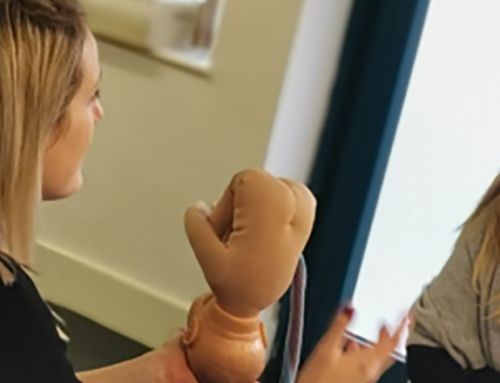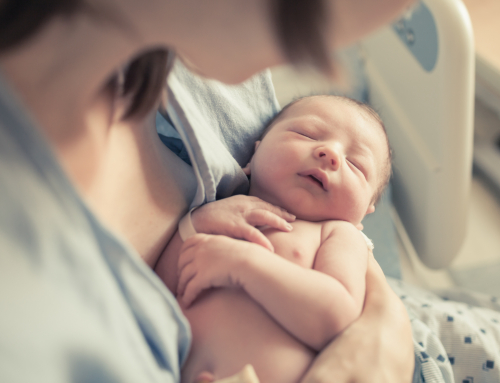Many UK hospitals have focused on prioritising support for homebirth during Covid-19, recognising that keeping as many birthing women and people away from the hospital as possible during a pandemic is the best way to keep midwives and families safe from the coronavirus. These hospitals have also put more resources into community midwifery, offering antenatal and postnatal care either in the pregnant woman’s own home, or somewhere close by.
By aiming to keep a group of midwives away from the hospital they are effectively creating the ‘bubbles’ that are now being spoken about, where groups of people limit their interactions to a specific group as far as possible. In this way, midwives in the community ‘bubble’ cannot spread, or pick up the virus from midwives in the hospital. This concept was supported in a guidance document on Covid-19 which was jointly created by the Royal College of Midwives (RCM) and Royal College of Obstetricians and Gynaecologists (RCOG).
“It may be of benefit for midwifery services to keep community midwifery staffing as separate as possible from hospital midwifery staffing to reduce the risk of transmission between staff.”
Unfortunately, not all hospitals followed this plan and many have stopped support for homebirths, and are forcing people to choose between attending hospital for their birth, or birthing without a midwife at home. Giving birth at home without a midwife is legal in the UK, and you can have your partner, doula, friend, or anyone else with you at the birth (other than, ironically, a registered midwife unless they are insured!)
If your hospital is currently saying that it is not supporting homebirths, and you don’t want to birth without medical care, you don’t have to accept it! There are a number of things that you can do to try to encourage the hospital to re-think their policy, and this is often successful. It can help to understand what reasons they are relying on to attempt to justify service closures, then hold them to account – get them to justify their reasons and then check that the reasons they are relying on really are correct.
Here are some common reasons that women are being denied support for a homebirth, and options that you may have to negotiate with the hospital to get the birth you want.
“You can’t have care at a homebirth because of the ambulance service”
At the start of the Covid-19 crisis, ambulance services were put under increased strain, mostly due to their own staff having to self-isolate when they had symptoms while there was little or no access to testing to see if they were safe to work. This meant that some hospitals decided to temporarily close their homebirth service because they were worried that in an emergency there may be a delay with an ambulance arriving.
Interestingly, many ambulance services cover multiple hospitals, and yet different hospitals within the same ambulance service areas had different policies – some shutting down support for homebirth and others encouraging more homebirths. How could this be? The answer lies in thinking outside the box. Most homebirth to hospitals transfers are not emergencies. The most common reason for them happening is that the person giving birth has decided that they want more pain relief and so ‘blue lights’ aren’t necessary, in fact a calm and gentle transfer is better to support a woman’s oxytocin flow. (Oxytocin is a vital hormone of labour which can be inhibited by stress and anxiety, and is promoted with calmness and love). One London hospital asked the families in their care who were planning homebirths to look at other options such as their own transport, or taxis, for non-emergency transfers, leaving only the rare emergency transfer to the ambulance service who confirmed that this was still well within their capacity.
Covid-19 testing for health care staff is now more widely available, so staff don’t need to be away from work solely because they have possible, but undiagnosed symptoms of Covid-19, and ambulance staffing levels are much better than they were. If your hospital still tells you that homebirths are not available because of the ambulance service, you can, if you wish, speak to the ambulance service themselves and find out for yourself what their current capacity situation is, including for blue light emergencies. If it turns out that they are not struggling from the effects of Covid-19 anymore, you can feed this back to the hospital and request that, therefore, your homebirth is now supported.
You may also wish to talk to the hospital about other options for transfers. Sometimes women are told that they ‘have to’ transfer in an ambulance, but this is not true. While there will be some situations where this is sensible and appropriate, for most transfers there is no need for an ambulance and there is no obligation whatsoever to use one – the decision is the birthing woman or person’s only – no one else’s.
“You can’t have a homebirth because there aren’t enough midwives”
Similar to the problems seen within the ambulance services, the numbers of midwives who were forced to self-isolate at the beginning of the Covid-19 pandemic meant that in some areas, finding enough staff was very difficult. However, the RCM and RCOG’s joint advice said that homebirth services should remain fully open until midwifery absences reached 20%, and now that hospitals have access to Covid-19 tests, midwifery staffing levels are far closer to normal.
If you are told that you can’t have a homebirth due to Covid-19 related staffing levels you can provide your hospital with this guidance and ask them to confirm whether or not their staff numbers are at or below 20% of their pre Covid levels. This wording is important because most hospitals are running with far fewer midwives than they need, so the percentage needs to be compared to their norm – not what their optimum levels would be!
“You can’t have a homebirth because you’ve got Covid-19 symptoms”
There is a very small amount of evidence that some of the babies of women who have Covid-19 during their labour may experience problems with their heart rate. Because of this, RCOG are recommending that those who have symptoms of Covid-19 should give birth in hospital and be offered continuous fetal monitoring. This is not a requirement or a rule that you have to follow – the decision is yours, the person giving birth, and yours alone. You can choose to give birth in hospital and not be continuously monitored (as this has risks in itself), or you can choose to have the monitoring, or have it for a while and then take it off, or have intermittent monitoring only – or you can choose to remain at home for your labour and birth, if you wish. You can’t have continuous monitoring at home, but you can still have your baby’s heart listened to intermittently, which evidence shows to be as successful at picking up problems with the baby’s heart rate as continuous monitoring, but with a lower chance of a false positive (that is, the monitor showing a problem which isn’t really there).
Another reason that your hospital may not wish to send midwives to your home if you have Covid-19 symptoms is for the protection of their staff. While this seems to be reasonable, midwives will be caring for you in hospital using the same personal protective equipment (PPE) that they can bring to your home, without you risking taking the virus into the hospital and possibly passing it onto other new mothers and babies. With some planning and preparation, your home should be at least as safe for the midwives as hospital.
I hope that this has given you some confidence in responding to some of the most common reasons that people are told that they can’t have a home birth during the Covid-19 pandemic. I hope that midwives, too, will take these suggestions on board and challenge the status quo, encouraging their hospitals to re-open their homebirth support services and to welcome more babies into their parents’ arms in the comfort and peace of their own home.
References
- https://www.rcm.org.uk/media/4099/2020-05-22-guidance-for-provision-of-midwife-led-settings-and-home-birth-in-the-evolving-coronavirus-covid-19-pandemic.pdf
- rcm.org.uk
- rcog.org.uk
- https://www.aims.org.uk/information/item/freebirth
- https://www.rcm.org.uk/media/4099/2020-05-22-guidance-for-provision-of-midwife-led-settings-and-home-birth-in-the-evolving-coronavirus-covid-19-pandemic.pdf
- https://www.ncbi.nlm.nih.gov/pmc/articles/PMC7036645/
- https://www.rcog.org.uk/globalassets/documents/guidelines/2020-06-04-coronavirus-covid-19-infection-in-pregnancy.pdf





